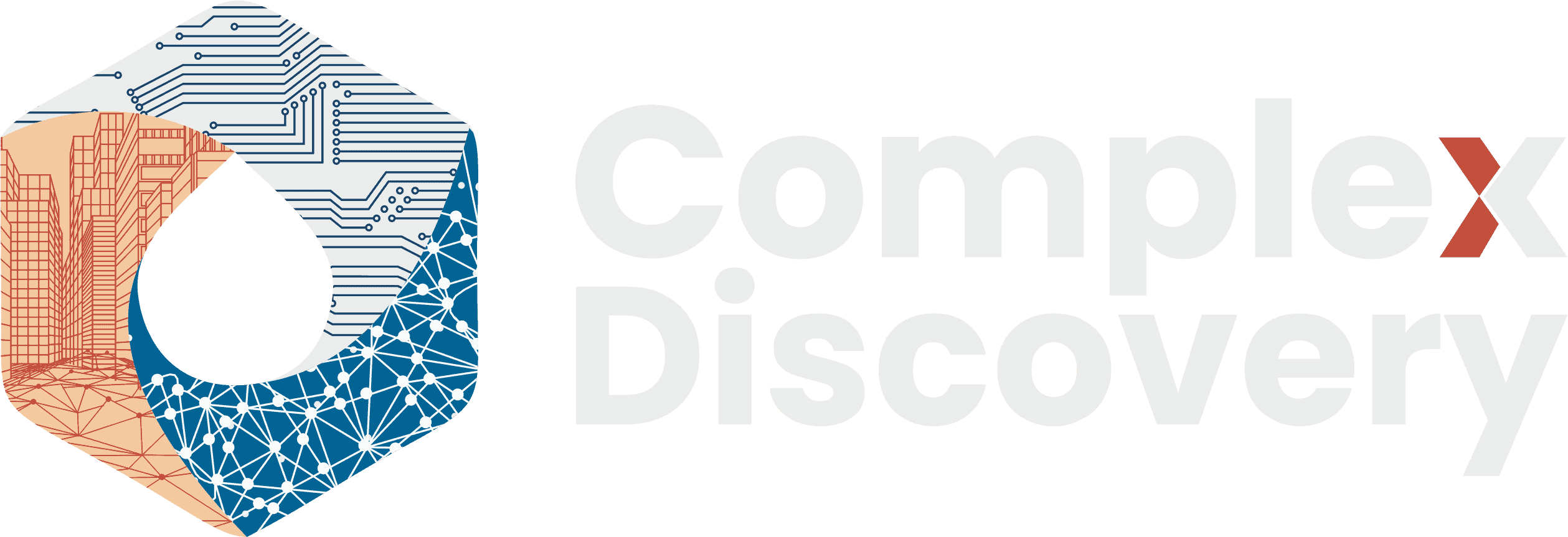Editor’s Note: Cybersecurity risks are no longer confined to enterprise firewalls. As the Phantom Hacker scam demonstrates, personal account breaches—especially those involving executives—can spiral into full-blown corporate crises. This deeply relevant article explores how social engineering and remote access fraud now exploit personal digital vulnerabilities to infiltrate organizations, exposing legal and compliance teams to new tiers of regulatory risk. For cybersecurity, information governance, and eDiscovery professionals, the message is clear: protecting the perimeter isn’t enough. Personal digital hygiene and cross-boundary protocols must become part of every organization’s playbook. If your security model doesn’t account for executive-level personal account breaches, it’s time to rethink it—now.
Content Assessment: Phantom Hacker Fraud: The Corporate Risk You're Not Monitoring
Information - 94%
Insight - 94%
Relevance - 95%
Objectivity - 93%
Authority - 93%
94%
Excellent
A short percentage-based assessment of the qualitative benefit expressed as a percentage of positive reception of the recent article from ComplexDiscovery OÜ titled, "Phantom Hacker Fraud: The Corporate Risk You're Not Monitoring."
Industry News – Cybersecurity Beat
Phantom Hacker Fraud: The Corporate Risk You’re Not Monitoring
ComplexDiscovery Staff
Consider this hypothetical scenario, one that’s not far removed from current realities: A Fortune 500 general counsel asks their eDiscovery team to investigate suspicious financial transfers, only to discover that the “phantom hacker” scam has successfully infiltrated their organization through a senior executive’s personal accounts, creating potential data exposure risks and compliance nightmares that traditional cybersecurity frameworks weren’t designed to address.
The FBI’s latest warnings regarding the so-called “Phantom Hacker” scam reveal more than just another consumer fraud scheme—they expose a sophisticated attack vector that threatens the intersection of personal and corporate digital security. With over $1 billion lost since 2024, this multi-phase fraud operation mirrors the advanced persistent threat techniques that cybersecurity, information governance, and eDiscovery professionals face daily, but with a crucial difference: it’s targeting the personal lives of the very executives whose corporate access makes them the most valuable prizes for bad actors.
Understanding the Corporate-Personal Security Bridge
The Phantom Hacker scam operates through three carefully orchestrated phases that demonstrate alarming parallels to corporate cyber attacks. Initially, scammers impersonate tech support personnel, leveraging social engineering and reconnaissance techniques—including social media analysis and spoofed caller IDs—to convince victims to install remote access software. This mirrors the initial access phase of advanced persistent threats, where attackers gain foothold through trusted channels.
The second phase introduces a financial institution imposter who claims the victim’s accounts have been compromised by foreign hackers, demanding immediate fund transfers to “secure” accounts. The final phase deploys a government authority figure, complete with official-looking documents, to reinforce the legitimacy of the ongoing fraud. Each phase builds credibility through layered deception, sophisticated technical capabilities, and psychological manipulation that would be familiar to any security professional who has analyzed state-sponsored campaigns.
What makes this particularly relevant to corporate environments is how these personal compromises create organizational vulnerabilities. When executives grant remote access to personal devices that contain corporate communications, privileged client information, or access to company systems, the traditional boundaries between personal and professional digital security collapse entirely.
The Expanding Regulatory and Legal Landscape
Recent SEC cybersecurity disclosure requirements have fundamentally changed how organizations must view executive-level security incidents. Personal account compromises are no longer purely individual matters when they involve personnel with access to material corporate information. Organizations now face potential obligations to investigate whether corporate data has been exposed through personal device compromises, creating new categories of incidents that traditional incident response plans may not address.
For eDiscovery professionals, these scenarios present unprecedented challenges around evidence preservation and chain of custody. When an executive’s personal device is compromised through a phantom hacker attack, determining what corporate communications or client data may have been accessed requires forensic capabilities that extend beyond typical internal investigations. The legal complexity increases when personal privacy rights intersect with corporate discovery obligations, particularly when attempting to preserve evidence from personal accounts and devices.
Information governance frameworks must now account for how publicly available executive information can be weaponized through AI-enhanced reconnaissance. The same social media profiles and professional information that support business networking become intelligence sources for sophisticated social engineering campaigns that can ultimately target corporate assets.
Strategic Response for Modern Organizations
The convergence of personal and corporate risk requires organizations to fundamentally rethink their approach to executive security. Traditional cybersecurity training focused solely on corporate systems leaves dangerous gaps when executives’ personal digital hygiene becomes a pathway to organizational compromise. Forward-thinking companies are implementing comprehensive programs that address personal device security, social media awareness, and family cybersecurity education as core business protection strategies.
Organizations must develop incident response protocols specifically designed for scenarios where personal compromises threaten corporate interests. This includes establishing clear reporting channels that encourage immediate disclosure of potential personal security incidents without professional stigma, recognizing that delayed reporting can transform contained personal incidents into full-scale corporate breaches.
The most sophisticated organizations are implementing continuous monitoring systems that track when executive personal information appears in threat intelligence feeds, providing early warning of potential targeting campaigns. These systems complement traditional corporate security monitoring by extending visibility into the personal digital footprint of high-value personnel.
For eDiscovery teams, this new threat landscape requires developing specialized protocols for investigating and preserving evidence when personal and corporate digital boundaries blur. This includes understanding how to handle personal device forensics, navigate complex privacy considerations, and maintain chain of custody when evidence spans personal and professional environments.
The Professional Imperative
The phantom hacker threat represents a fundamental shift in how cyber risks manifest in corporate environments. Rather than treating personal and corporate security as separate domains, organizations must recognize that sophisticated threat actors are already operating across these boundaries. The techniques used in phantom hacker campaigns—advanced social engineering, AI-enhanced reconnaissance, and multi-phase psychological manipulation—are increasingly being adapted for direct corporate targeting.
Cybersecurity professionals must expand threat models to include personal account compromises of key personnel as potential vectors for corporate infiltration. Information governance teams need frameworks for managing data exposure risks that originate outside traditional corporate perimeters. eDiscovery professionals require new protocols for investigating incidents where personal privacy rights and corporate evidence preservation obligations intersect.
Resources such as the FBI’s Internet Crime Complaint Center provide reporting mechanisms that serve both individual and organizational interests, but the most effective protection comes from proactive preparation. Organizations that develop comprehensive strategies addressing the personal-corporate security intersection, rather than treating them as separate concerns, will be best positioned to prevent the phantom hacker’s evolution from consumer fraud to corporate threat vector.
The hypothetical Fortune 500 scenario we opened with isn’t far-fetched—it’s happening in boardrooms and legal departments right now. The organizations that recognize how personal cybersecurity failures can become corporate governance crises, and prepare accordingly, will define the new standard for enterprise risk management in an era where the boundaries between personal and professional digital lives continue to dissolve.
News Sources
- FBI warns seniors about Phantom Hacker scam draining life savings (Fox News)
- FBI Issues Urgent Warning: Phantom Hacker Scam Devastates Seniors with $1 Billion in Losses (Scam Watch HQ)
- FBI, cybersecurity experts warn of 3-phase scam that is draining bank accounts (The Hill)
- FBI warns law firms they’re being targeted by hackers (Cybernews)
- Inside the FBI: The Phantom Hacker Scam (FBI.gov)
Assisted by GAI and LLM Technologies
Additional Reading
- When Legal Privilege Isn’t Enough: Cyber Threats Escalate in the Legal Industry
- From Castle Rock to Cybersecurity: Edinburgh Insights for ILTACON 2025
- Stonehenge: Ancient Order, Modern Insight
- A Walk Through History: The Churchill War Rooms and the Power of Resilience
- The Architecture of Isolation: Cold War Cities and Corporate Silos
- Castles, Borders, and the Battle for Cyberspace
Source: ComplexDiscovery







































